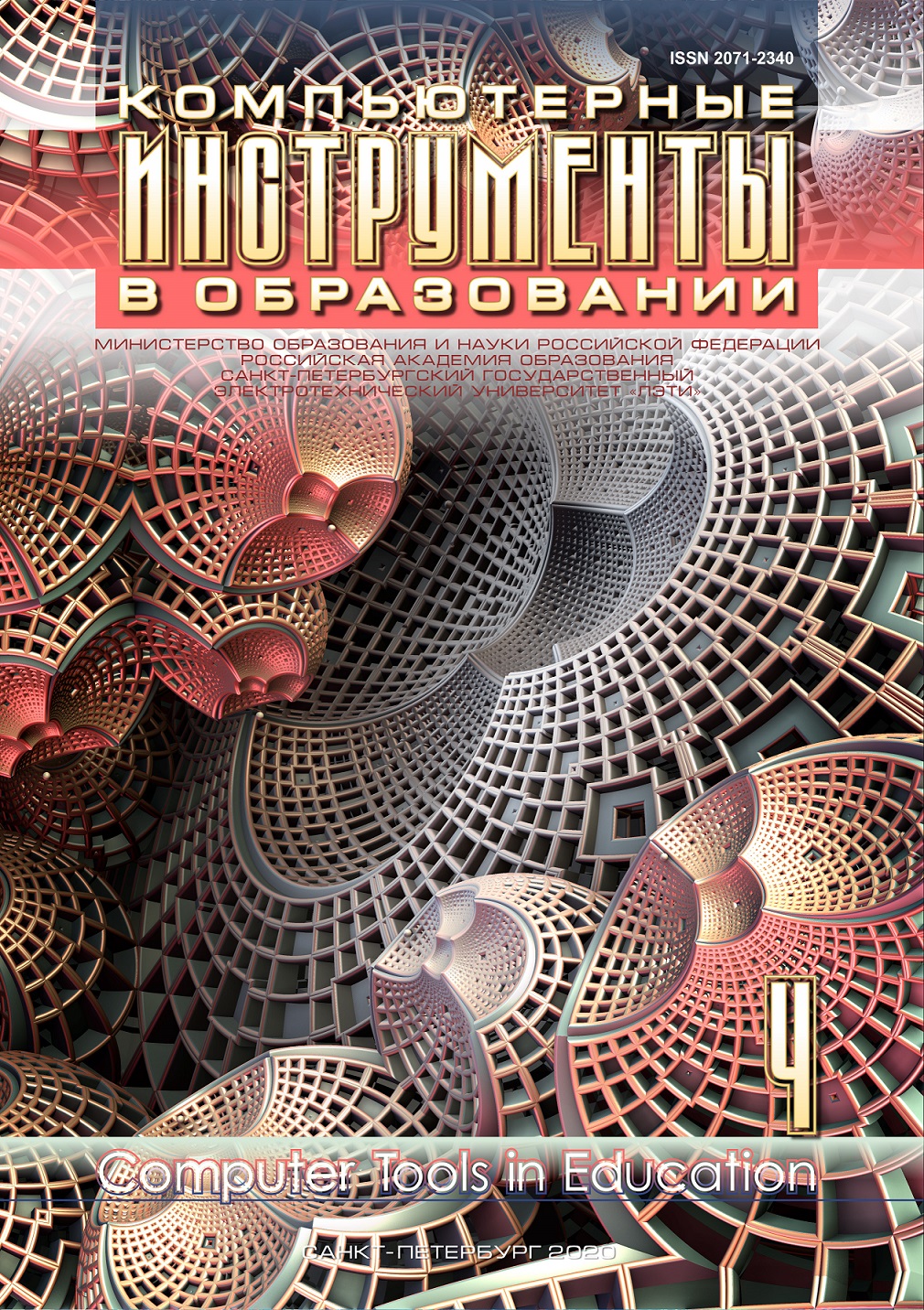Визуализация функциональных зависимостей в программах динамической геометрии
Аннотация
Представлены различные способы визуализации функций и геометрических преобразований плоскости, встречающихся в школьном курсе, с помощью систем динамической геометрии «Математический конструктор», «Живая Математика», GeoGebra и сценарии их использования в духе современных тенденций в образовании. Обсуждаются новые возможности, возникающие благодаря использованию компьютерных моделей при изучении функций и их свойств. Основное внимание уделено специфически компьютерным интерпретациям функций, в частности, так называемым
динографикам (dynagraph), в которых используются параллельные оси аргументов и значений, а соответствие, задаваемое функцией, обнаруживается при движении точки-аргумента по своей оси.
Литература
V. N. Dubrovskii and S. N. Pozdniakov, “Dinamicheskaya geometriya v shkole. Rabota s grafikami funktsii sredstvami dinamicheskoi geometrii” [Dynamic geometry at school. Working with graphs of functions using dynamic geometry], Komp’yuternye instrumenty v shkole, no. 5, pp. 32–45, 2008 (in Russian).
V. Vavilov, “Setchatye nomogrammy” [Grid Nomograms], Kvant, no. 9, pp. 22–29, 1978 (in Russian).
1C Company, V. N. Dubrovskii, V. A. Bulychev et al. “How to make a mathematical discovery,” in obr.1c.ru. [Online] (in Russian). Available: https://obr.1c.ru/mathkit/lessons5.html
M. Flashman, “Mapping Diagrams and a New Visualization of Complex Functions with GeoGebra,” in Proc. Bridges 2019 Conference, pp. 295–302, 2019.
T. Brieske, “Mapping Diagrams, Continuous Functions and Derivatives,” Two-Year College Mathematics Journal, vol. 9, no. 2, pp. 67–72, 1978; doi: 10.2307/3026603
P. Goldenberg, P. Lewis, and J. O’Keefe, “Dynamic representation and the development of a process understanding of function,” G. Harel and E. Dubinsky, eds., in The Concept of Function: Aspects of epistemology and pedagogy, Washington: Mathematical Assn of Amer, 1992, pp. 235–260.
N. Sinclair, L. Healy, and C.O.R. Sales, “Time for telling stories: narrative thinking with dynamic geometry,” ZDM Mathematics Education, vol. 41, pp. 441–452, 2009; doi: 10.1007/s11858-009-0180-x
V. N. Dubrovskii, V. A. Bulychev and N. A. Lebedeva, Mathematics, grades 5-11, Collection of interactive models, [Soft], iss. 8.0, 1C:Publishing, 2019. [Online] (in Russian). Available: https://obr.1c.ru/mathkit/collection/models/[mk_m8]_3-01.html
A. V. Pantuev, “EDUCATIONAL materials and links,” in horohoro.r. [Online] (in Russian). Available: https://horohoro.ru)
A. I. Sgibnev, “Dinographics in the course of algebra 7-10 grades,” Mathematics in School, (in print).
M. Bridger, “Dynamic Function Visualization,” The College Mathematics Journal, vol. 27, no. 5, pp. 361–369, 1996.
R. Chijner, “Visualizing Functions of Two Variables” in GeoGebra Book. [Online]. Available: http://www.geogebra.org/m/qjvkbXxP
N. B. Vasil’ev and V. L. Gutenmakher, Pryamye i krivye [Straight lines and curves], Moscow: MCCME, 2016 (in Russian).
S. Steketee and D. Scher, “Connecting functions in geometry and algebra,” Mathematics Teacher, vol. 109, no. 6, pp. 448–455, 2016; doi: 10.5951/mathteacher.109.6.0448
Материал публикуется под лицензией:








